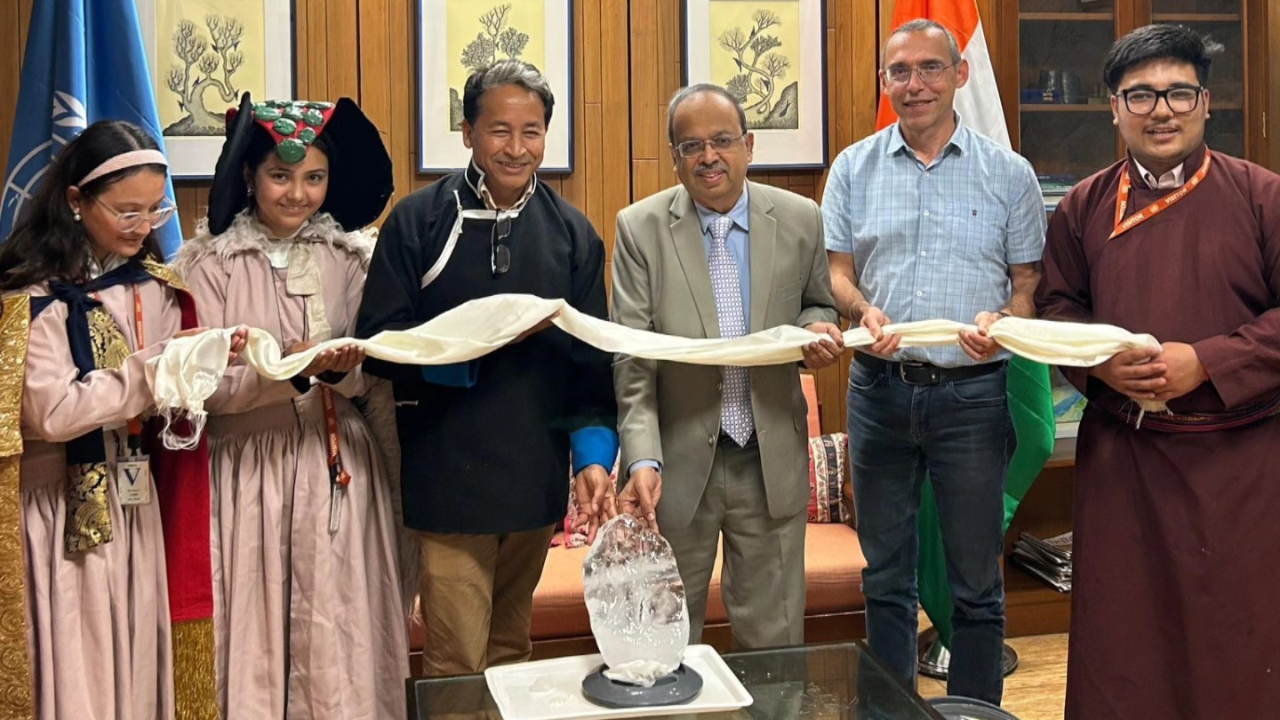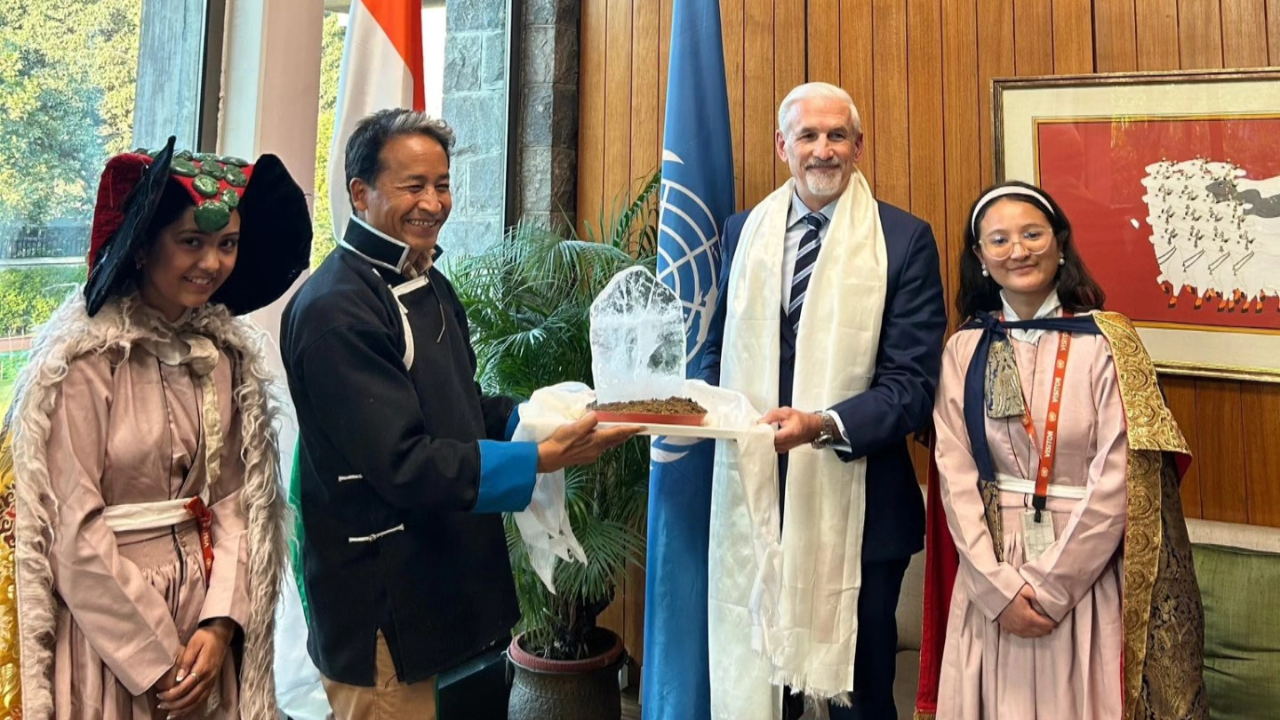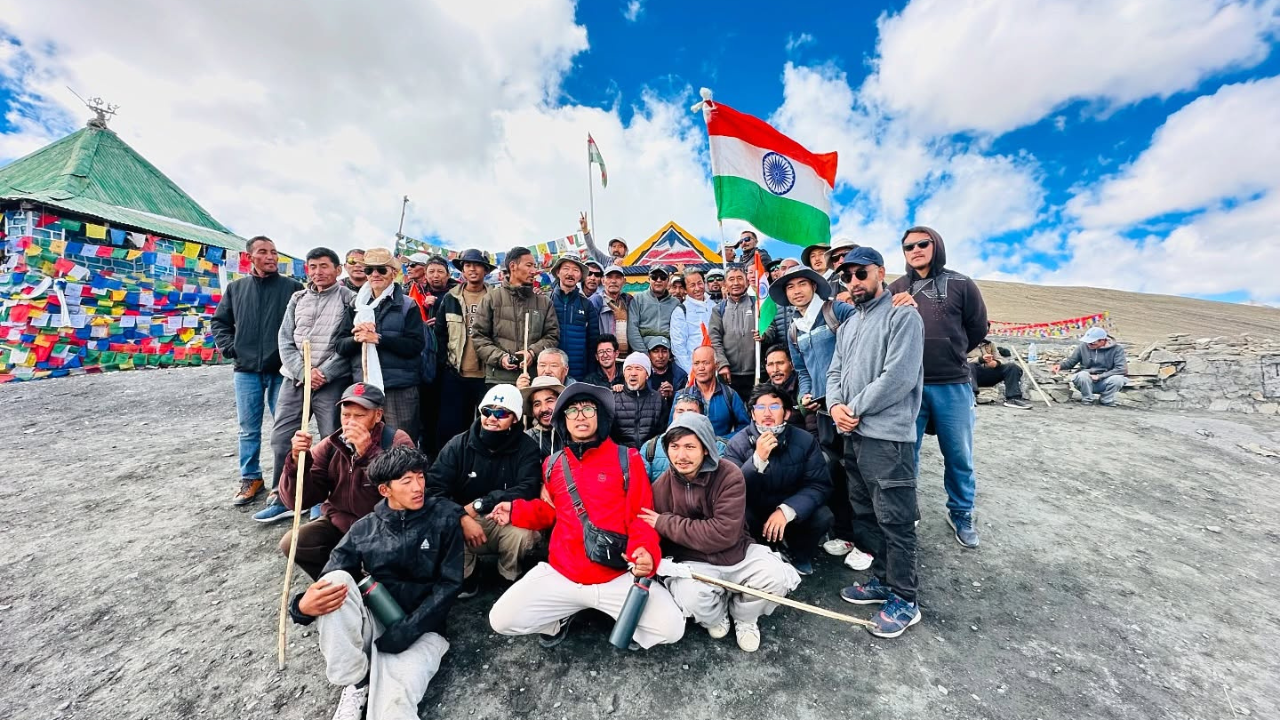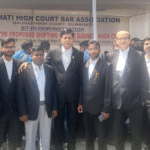The Arrest and National Security Act (NSA) Action

In September 2025, Ladakhi climate activist and education reformer Sonam Wangchuk was arrested under the National Security Act (NSA), sparking widespread protests across India. Known globally for his innovative work in sustainable technologies and education, Wangchuk’s sudden detention shocked civil society, raising serious concerns about freedom of speech, dissent, and the treatment of activists in the region.
Authorities claimed the action was necessary to maintain public order following his repeated campaigns highlighting the fragile Himalayan ecology, demand for Ladakh’s statehood, and safeguards under the Sixth Schedule. Critics, however, argue that the NSA was misused to silence one of India’s most respected voices.
The arrest instantly ignited social media platforms, where hashtags like StandWithSonamWangchuk and #FreeWangchuk began trending. Youth groups, environmental activists, and students poured into the streets demanding his immediate release. From Ladakh to Delhi, the protests grew in size and intensity, turning into one of the largest student-led movements of 2025.
National and international human rights organizations condemned the arrest, describing it as a blow to democracy and the right to peaceful protest. Amnesty International and Human Rights Watch called on the Indian government to reconsider the NSA charges.
At the same time, the ruling government defended its decision, citing “security concerns” in Ladakh and accusing Wangchuk of “provoking instability.” The opposition parties, however, rallied around the activist, using the incident to target the government’s authoritarian tendencies.
The arrest of Sonam Wangchuk is not merely a legal case—it has become a turning point in India’s political and social narrative. It raises deep questions about dissent, environmental activism, and the balance between security and democracy
Nationwide Protests and Student Movements

The arrest of Sonam Wangchuk under the NSA triggered a nationwide student movement reminiscent of earlier historic protests in India. From Delhi University to Jawaharlal Nehru University (JNU), Jamia Millia Islamia, and IIT campuses, students organized sit-ins, marches, and candlelight vigils demanding justice.
Ladakh itself became the epicenter of demonstrations, where locals joined monks, women, and young activists carrying placards reading “We Want Justice” and “Save Ladakh, Save Democracy.” The protests gained traction in states like Assam, West Bengal, Kerala, and Maharashtra, highlighting Wangchuk’s influence beyond regional boundaries.
Political parties also took sides. Opposition leaders visited protest sites and criticized the government’s use of the NSA, calling it an “undemocratic weapon against citizens.” Meanwhile, government officials insisted the protests were being “hijacked by vested interests.”
Social media amplified the movement. Instagram reels, X (formerly Twitter) trends, and YouTube live streams captured real-time protests, making Wangchuk’s arrest an international issue. Global climate activists like Greta Thunberg also extended solidarity, further increasing international pressure.
This student-led uprising of 2025 became one of the defining protest movements of the decade. The government’s handling of it will be closely watched as India heads into crucial political years.
Political Reactions and International Pressure

The arrest of Sonam Wangchuk has generated sharp political reactions within India. The ruling government continues to defend the move, stressing that Ladakh is a sensitive border region and accusing Wangchuk of provoking unrest. However, opposition leaders have united to condemn the arrest, framing it as a blatant attack on democratic values.
Parliament sessions have witnessed heated debates, with members demanding clarity from the Home Ministry. Civil society organizations have also filed petitions in the Supreme Court challenging the NSA charges.
Internationally, the arrest has placed India under the spotlight. Human rights bodies, European lawmakers, and climate organizations have expressed concern, urging India to uphold democratic freedoms. Several global newspapers, including The Guardian and The New York Times, carried front-page reports on Wangchuk’s detention, framing it as a test of India’s democratic resilience.
The international dimension adds pressure on New Delhi, especially as India continues to position itself as a global leader on climate change and sustainable development. Arresting a figure celebrated for environmental innovation seems contradictory, critics argue.
As protests intensify, political analysts believe this incident may influence upcoming elections, with student groups and youth voters rallying around the symbolism of Wangchuk’s struggle.
The future remains uncertain for Sonam Wangchuk. While his arrest has galvanized support for Ladakh’s demand for statehood and Sixth Schedule protections, the legal case under NSA could keep him behind bars for months without trial. Lawyers representing Wangchuk have filed urgent petitions, arguing that his detention violates constitutional rights.
Meanwhile, the protests show no sign of slowing down. Student unions, climate activists, and Ladakhi organizations are planning nationwide marches in October 2025. The government faces a critical decision: either ease the crackdown and engage in dialogue, or risk further escalation.
For Ladakh, this crisis has re-energized conversations about autonomy, environment, and the rights of indigenous communities. Wangchuk’s legacy, already strong due to his work in education and sustainability, now carries the weight of being a symbol of resistance.
Whether the government negotiates or continues with its hardline approach, one fact is clear: Sonam Wangchuk’s arrest has transformed into a national movement that may redefine India’s political landscape in 2025 and beyond.
Resources
| No. | Source / Publisher | Link | Description |
|---|---|---|---|
| 1 | The Hindu | thehindu.com | Reported on Sonam Wangchuk’s arrest and protests across Ladakh. |
| 2 | The Indian Express | indianexpress.com | Covered nationwide student movements and political reactions. |
| 3 | BBC News | bbc.com | Provided international coverage and global reactions on the issue. |
| 4 | The Guardian | theguardian.com | Highlighted human rights concerns and Ladakh’s ecological issues. |
| 5 | Al Jazeera | aljazeera.com | Analyzed NSA use in India and international criticism over Wangchuk’s detention. |
📌 Moin Uddin & Hafiz Rashid Talk: South Karimganj Demands – Read Now
📌 Bandarkuna GP High Court Order Landmark – Read Now
📌 MLA Doda East Mehraj Malik Detention Misleading Claim – Read Now
📌 Kabir Ahmed Congress Vice President & Inter College – Read Now
📌 Mahalaya in Silchar: Devotion & Festivities of Durga Puja – Read Now
📌 Advocate Hasina Rahman Choudhury: Congress Ticket 2026 – Read Now
📌 Rahul Roy Supports Tin Tulli & Land Grants in Manipur – Read Now
📌 Siddique Ahmed Distributes Arunodoi Cards to Women – Read Now
📌 Police Brutality: NCC Students Injured & Arrested – Read Now




Pingback: Nurul Hoque Biography Age Career Family Net Worth & More
Pingback: Roshani Prajapati Bio Age Height Career Family & Net Worth
Pingback: Suhani Laskar Bio13-Year-Old Instagram Star from Hailakandi